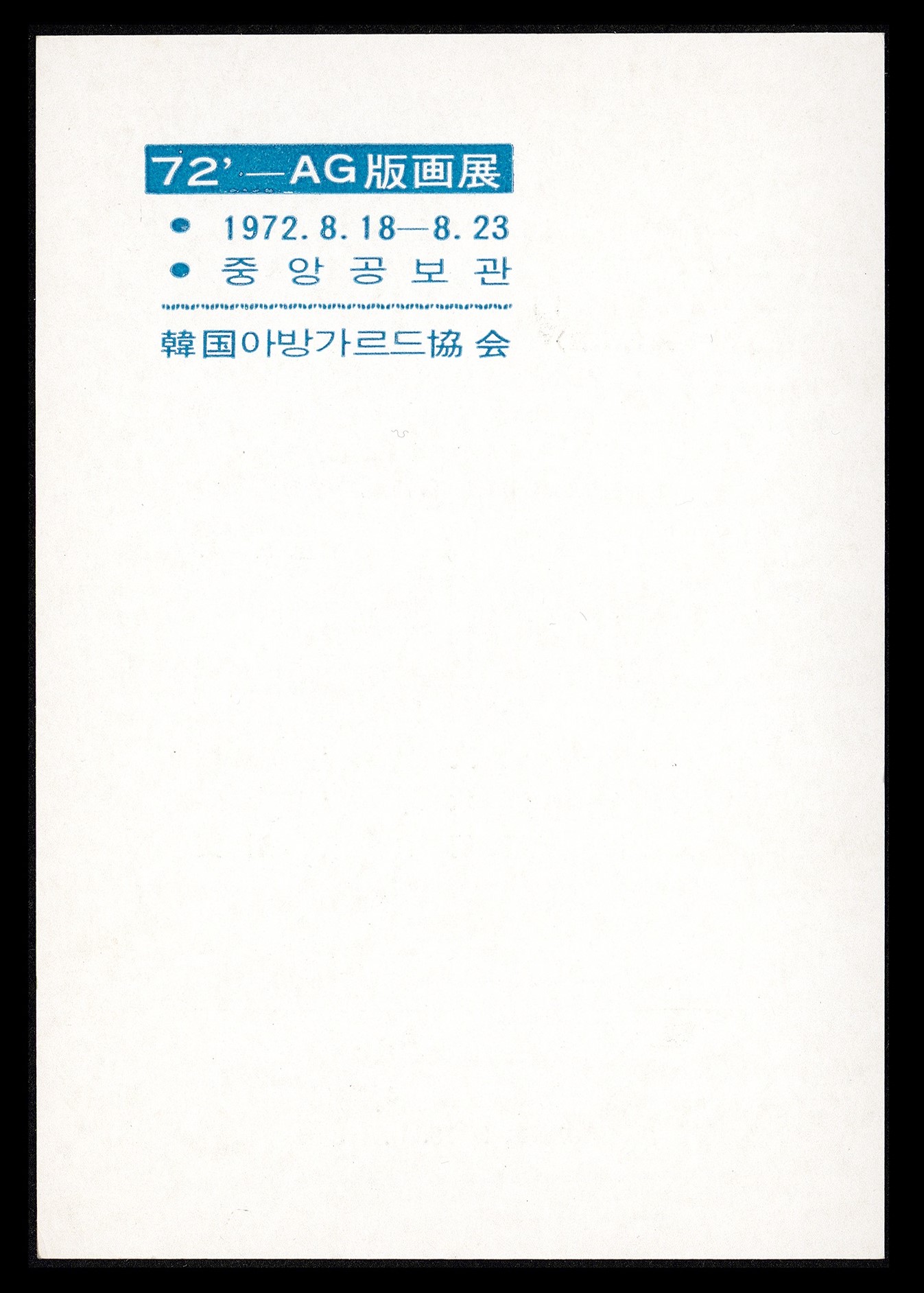
’72 Print Exhibition of AG, Invitation, 1972, MMCA Art Research Center Collection
’72 Print Exhibition of AG
* Source: MMCA
Related
-
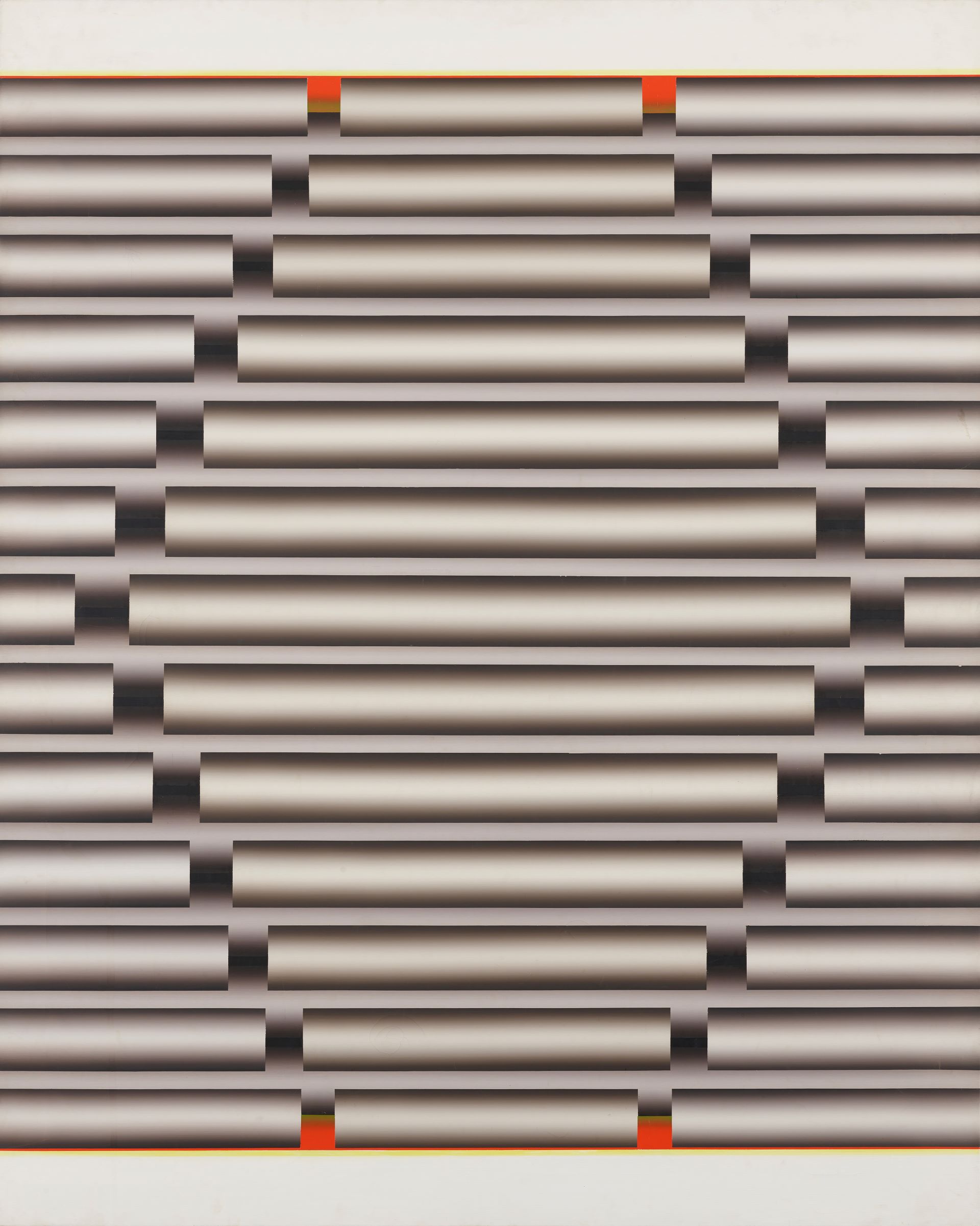
Lee Seungjio
Lee Seungjio(1941-1990) is known for his painting series Nucleus that features various cylindrical shapes reminiscent of pipes. In 1962, Lee formed the group Origin Fine Arts Association with fellow young artists to challenge the established art revolving around the National Art Exhibition (Gukjeon) and Art Informel abstract painting. At the Union Exhibition of Korean Young Artists held in 1967, he presented geometric abstract paintings. In subsequent years, he began to produce his distinctively clear and intelligent abstractions of cylindrical shapes in various compositions, including Nucleus 77, which earned the grand prize at the first International Grand Art Exhibition of Dong-A in 1968. Throughout the 1970s, he continued to explore geometric abstraction by actively engaging in avant-garde art organizations like the Korean Avant Garde Association (referred to as AG). He also participated in several exhibitions, such as the first Daegu Contemporary Art Festival (1974), the first Seoul Biennale (1974), the eleventh São Paulo Biennale (1971), and the seventh International Festival of Painting Cagnes-sur-Mer (1975). Meanwhile, Lee performed remarkably at the National Art Exhibitions. In 1968, he won the Minister of Culture and Information Award at the seventeenth National Art Exhibition for his Nucleus G-99, which was praised as “an avant-garde work that would never have been considered for even an honorable mention in the history of the National Art Exhibitions.” He submitted his work to the National Art Exhibition every year until 1981. The picture planes of the Nucleus series began to be gradually dominated by black hues in the late 1970s. By the mid-1980s the size of the canvases became larger. After his trip to the U.S. in 1988, he moved onto new experiments in which cylindrical images were presented on aluminum or wooden panels. Today, Lee Seungjio is recognized as “an artist who pursued a practice of strict geometric abstraction that is rarely seen in Korean painting circles” and maintained “a prominent and refreshing presence in Korean contemporary art, which lacks traditions or experiences of logical practices.”
-
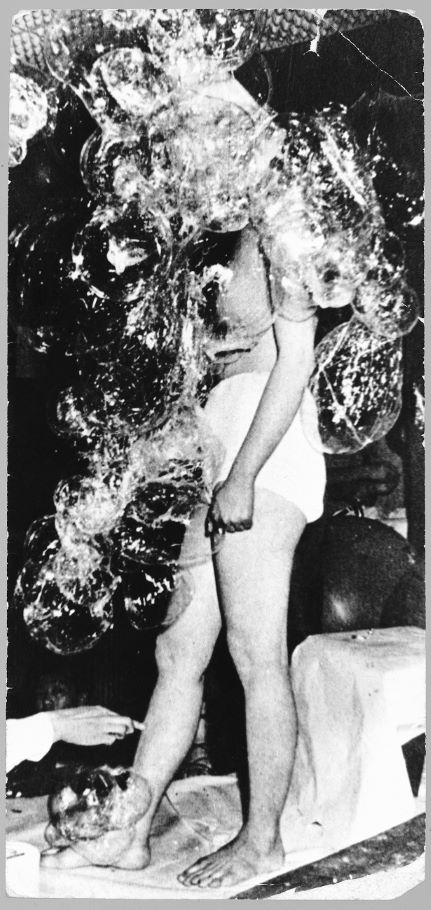
Performance
Performance is a genre within which artists use their voice, body, and objects to express their artistic vision through live action. It became popularized after World War II as an experimental genre through the work of John Cage and Merce Cunningham. Performance can be related to other movements of the period such as action painting, body art, happening, process art, Fluxus, and conceptual art. It is characterized by audience participation, improvisation, spontaneity, and provocativeness. The first work of performance in Korea is widely considered to be The Happening with Plastic Umbrellas and Candle Lights performed by Kang Kukjin, Chung Chanseung, Kim Youngja, Jung Kangja, Shim Sunhee, and Kim Inwhan during the Union Exhibition of Korean Young Artists held at the Korean Information Service Gallery in December 1967.
-
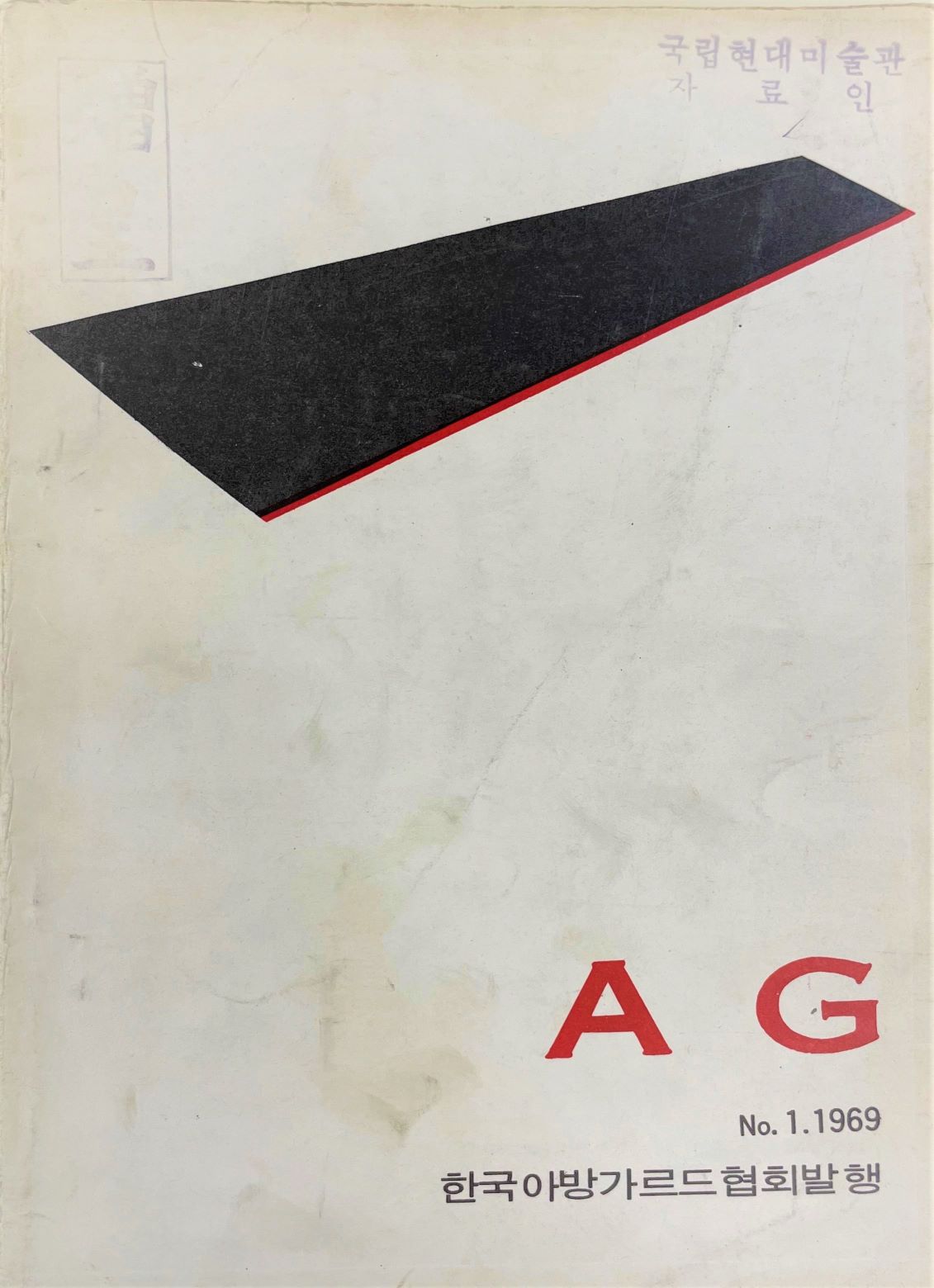
Korean Avant Garde Association (AG)
An art group formed in 1969 and active until 1975 that promoted avant-garde art. The group elevated the concept of avant-garde to the forefront of Korean contemporary art. It’s members explored and developed new style of sculpture, and sought to contribute to the development of a new Korean art culture. The group published the periodical AG, which centered on artists, sculptors, and art critics in their thirties, and through the periodical, the group introduced new oversea trends to Korea and explored the theory and concepts behind avant-garde aesthetics. The group is regarded as responsible for introducing conceptual and formal diversity to Korean contemporary art, through a transition of artistic values, the active use of new materials, and helping to foment a wider public understanding of new trends within contemporary art.
Find More
-

Korea Prints Association
An art association formed in January 1958 to stimulate the discipline of printmaking and to popularize the concept of printmaking. Members included Yoo Kangyul, Choi Youngrim, Park Sungsam, and Lee Hangsung. The group held its inaugural exhibition from March 18 to 24, 1958 at the Korean Information Service Gallery, and it held regular shows—once or twice per year—until 1968. The association held contests for upcoming artists from 1964 to 1975 in order to expand the base for printmaking. In 1969, the association held a printmaking contest for children. It also notably sought to achieve the internationalization of Korean art through the Korean Print Exhibition in 1968 in the Philippines. The association became less active after several young artists left the association and the Korean Contemporary Printmakers Association (Hanguk hyeondae panhwaga hyeophoe) in 1968.
-
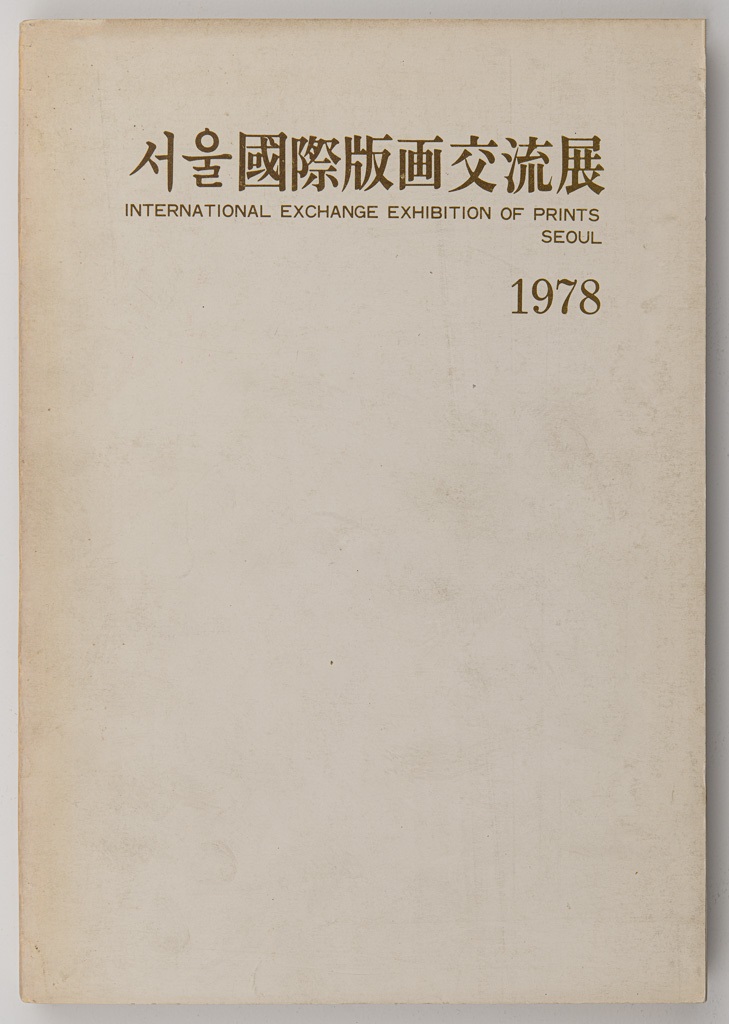
1978 Seoul International Print Exchange Exhibition
The 1978 International Exchange Exhibition of Prints Seoul was held at the National Museum of Modern Art (now MMCA) from March 14 to 23 in 1978. It was organized by the Korean Contemporary Printmakers Association [Hanguk hyeondae panhwaga hyeophoe] and sponsored by Gyegan Misool art magazine of the JoongAng Ilbo newspaper company. Artists from five countries (Korea, Taiwan, Hong Kong, Japan, and the U.S.) participated in the exhibition. There were a total of thirty-eight Korean artists: Kang Kukjin, Kang Whansup, Kwak Duckjun, Kwon Yeongsuk, Kim Kulim, Kim Minja, Kim Bongtae, Kim Sangku, Kim Sangyu, Kim Seon, Kim Youngchull, Kim Choungza, Kim Tchahsup, Kim Taeho, Kim Hyungdae, Ro Jaewhoang, Bae Yoong, Baik Kumnam, Suh Seungwon, Seok Ranhui, Youn Myeungro, Lee Kangso, Rhee Sangwooc, Lee Sunman, Lee Ywanho, Lee Ufan, Lee Eunsan, Lee Inhwa, Chang Hwajin, Chun Kyungja, Oan Kyu, Chung Chanseung, Cho Kookjeong, Jo Junyeong, Cha Myunghi, Choi Insu, Han Unsung, and Hwang Kyubaik. Ninety-seven artists submitted a total of 300 works, including fifty-nine from overseas. Korean artists demonstrated a wide range of trends in contemporary Korean printmaking, reflecting contemporaneous art, such as conceptual or monochrome art, geometric or expressionistic abstraction, and pop art, and emphasizing Korean and indigenous sentiments. The participation not only by printmakers but also by artists working in various mediums shows the art community’s interest in print genre at the time. In the 1970s, the Korean Contemporary Printmakers Association focused on international exchanges through prints, and this exhibition is one of its prominent achievements.
-

Korean Contemporary Printmakers Association
The Korean Contemporary Printmakers Association was founded in January 1968 to promote the distribution of and understanding about modern Korean prints while establishing a network between members. It was led by artists such as Kang Whansup, Kim Minja, Kim Sangyu, Kim Choungza, Kim Chonghak, Kim Foon, Bae Yoong, Suh Seungwon, Yoo Kangyul, Youn Myeungro, Rhee Sangwooc, Chun Sungwoo, and Choi Youngrim. It has played an important role in the revival of Korean prints, including holding regular association exhibitions, discovering and supporting artists, sharing knowledge on print through training sessions, and planning international exchange exhibitions. It has helped to produce leading artists in the Korean print field and organized joint exhibitions with various overseas artists to create a place for art exchanges. In 1996, the association announced regulations on original prints to provide an institutional system for the global internationalization of modern Korean print and the identification of Korean prints. Currently, more than 400 members are active.






